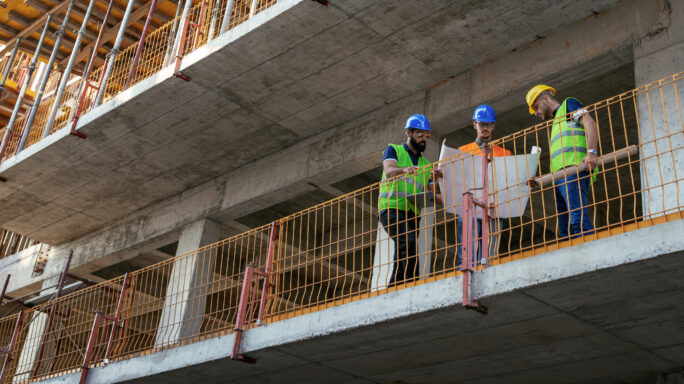Five tips to help you bid smarter
Here are our five tips to help you bid smart and get the construction projects you want - projects that fit both your strengths and profit goals.

In an attempt to win more work, many construction firms are treating the bidding process like a numbers game. If you bid on as many jobs as you can, surely you will land more bids, right? Wrong.
What you might not realize is that you’re actually increasing overhead costs as you invest time on bids you have little chance of winning. This is especially worrisome when facing a labor shortage. Plus, you’re not focusing on the types of jobs that are most profitable for your business. You have to bid smart to get the projects you really want— projects that fit both your strengths and profit goals.
Improve your bid-hit ratio (reference only)
You have to bid smart to get the projects you really want. Here are our top 5 essentials of a winning bid strategy.

Here are five things you can do now to help you bid smarter .
-
Know—and track—your bid-hit ratio
Do you know what your bid-hit ratio is? If not, you’re missing out on an important way to measure the success of your bidding process. A bid-hit ratio is the rate at which you successfully bid on projects. Construction firms of all sizes can benefit from making that simple calculation to compare the number of bids sent out to the number of jobs won.
This shouldn’t be a one-off calculation. Your bid-hit ratio should be tracked over time. Try breaking down your bid-hit analysis into categories such as public versus private, profit margin, estimator, contract or job type and size, and geography. This analysis will provide valuable information that can help you improve your bidding odds. It can reveal where to focus your bidding efforts in the future—and the projects to avoid—so you can optimize your bid strategy.
-
Understand your true job costs
To improve both your bid-hit ratio and profitability, you need to clearly understand your true job costs. Stiff competition means you have to nail the price of your bid, so your firm not only wins the work, but also maintains a nice profit margin.
Using job cost accounting software, you can get the information you need about job costs—from labor and materials to overhead and profitability. The software can help you identify where you’re making the most profit and where you’re not. You can examine job costs by different categories such as job type, customer, project manager, or cost code. Reviewing these details eliminates the guesswork, helping you get project estimates as close to the final job costs as possible.
Sage Estimating Test Drive (reference only)
Take Sage Estimating for a spin. Get in the driver's seat with this step-by-step guided tour and experience the ease of use of this powerful and flexible solution first-hand.

-
Add some face time during the bid process
Creating quick and accurate estimates certainly increases your chances of submitting a winning bid but it often takes more than that to set your proposal apart from the competition. There’s no substitute for personal interaction when cultivating a business relationship. One way you can improve your bid strategy is to add a meeting—preferably face to face—with the decision maker.
Face time with the prospective client is not only a great way to build rapport but it provides you with an opportunity to ask questions that go beyond what’s covered in the RFP. You can really get a feel for what they’re looking for and prepare your bid accordingly. Consider questions such as:
- What aspect of the job is most important to you?
- What top criteria are you using to evaluate the bids?
- Who is on the bid list?
- What are some qualities that would make a bidder stand out?
-
Give your bids an extra boost
Price is of course one of the most important factors in the bidding process; but offering little extras can help make your bid stand out against the competition. Once you’ve met with the potential client and understand what is most important to them, add that compelling differentiator to your proposal. In addition to offering a competitive price, demonstrate how your firm will go above and beyond expected levels of quality and service. Be sure to highlight what specifically makes your firm best for the job by including things such as project pictures and descriptions, customer quotes, special certifications, or a list of awards your firm has won.
Discover Sage Construction and Real Estate solutions (reference only)
Whether in your office or in the field— get the job done right every time.

-
Improve accuracy and speed
To improve your bid-hit ratio and overall bid strategy, build bids quickly, accurately, and confidently. Modern estimating software uses best-practice standards that can improve the speed of preparing estimates by 50% or more.
In addition to helping build estimates faster, estimating software can help you create precise takeoff directly from electronic plans and building models and it provides standardization of your estimating best practices. Estimating software also provides built-in error detection along with improved analysis by activity, phase, or other project breakdown.
Start implementing these tips into your bidding strategy now and stop wasting precious time and resources bidding on projects that aren’t a good fit for your company. Remember to focus on quality over quantity and apply the same strategic planning you would for any other area of your business.
Editor’s note: This article was first published in September 2021 and has been updated for relevance.





Ask the author a question or share your advice